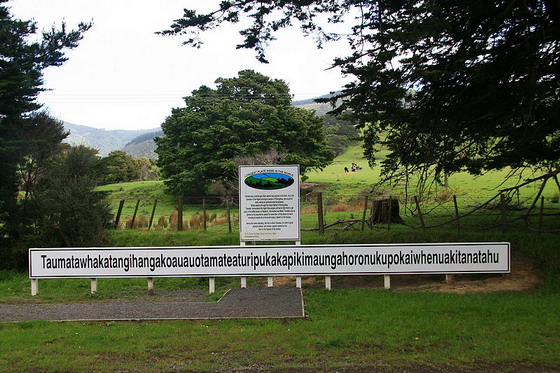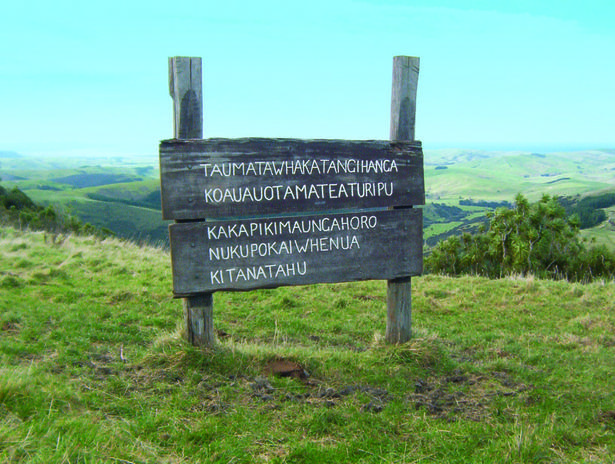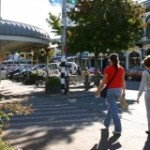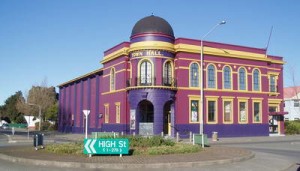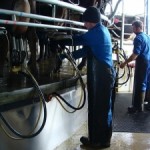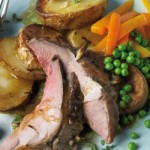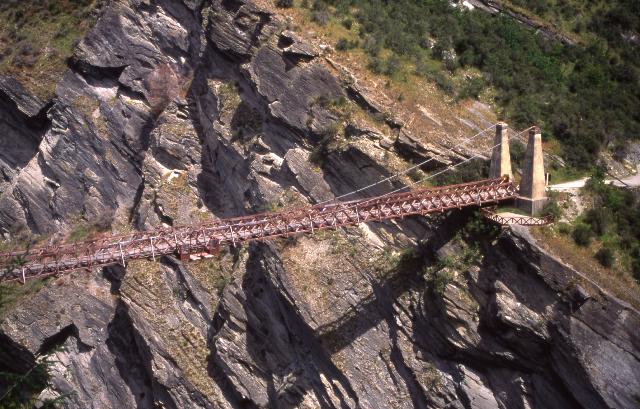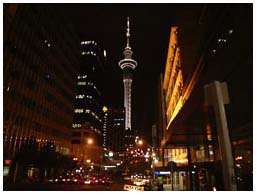
A night view of The Sky Tower, Auckland
My suitcase stands in the hallway and I am reluctant to empty its contents. I have returned from my journey to the Land of the Long White Cloud, and the children clamour around me asking what I have brought back for them.
What does one carry back with them as one returns from long journeys to unfamiliar places? Souvenirs? Yes, but not the bits and pieces of representative keepsakes of buildings, cast in miniature size, or the glossy post cards which make you wonder if you ever saw the place like that, but souvenirs…memories, remembrances… people and images, smells and sounds…and a certain intangible something, indescribable but with a sure recognition when one encounters it again.
It’s the smells I want to keep trapped and protected in the suitcase, a scent that will tug at my heart and soul and make me wish that I had never returned.
Does the soul make a journey of its own? Or is it my Hindu upbringing that leads me to believe that? How then does one explain the sense of belonging that one instantly feels in strange lands, so far away from where you dwell? Why does it seem more like home than the one you left?I
t was a strange and perhaps karmic connection that spurred me on this voyage. But that is another story, one that I will reserve for when we speak of the encounters of the heart.
New Zealand, Aotearoa. I had to look up the country in the atlas. A brush stroke, a comma, a mere whisper and a wisp of a long white cloud. A slice of paradise. God’s own country.
The plane landed in Auckland and the minute I stepped out of the airport, my hair stood on end. It’s just the cold, I told myself. Travelling from 40 degrees to 14, the body needs time to make the transition. But what about the heart that sang, and the soul that soared? You haven’t been abroad for a long time, the mind rationalized.
Warm arms and golden roses greeted me. And I fell in love.
Auckland, New Zealand. Commercial Capital. Harbour city. City of Sails. Population, approximately 1 million. Climate: Temperate. Named after the Earl of Auckland, who sailed to New Zealand in 1837 from England. Official language: English.
Encyclopedia details. A page from travel guides. Spots to see, places to eat, where to stay, distances, the entire travel rigmarole.
There is the tourist and there is the traveller. The tourist views ten cities in fifteen days. “If it is Tuesday, it must be Belgium.” Having returned home, there are the photo albums to display, the videotapes to inflict and the proud declaration to neighbours and friends, “I have just returned from Europe.” And pray tell, how is Madrid different from Paris? Well, the tourist muses, in Paris they speak French and in Madrid, Spanish. And that is about as much difference that is perceived. No, not even perceived. Even that comes from prior knowledge. But meet the traveller, and he would have savoured half a city in ten days. Ten days in just one city, the tourist asks disparagingly. And what did you do in one place for so long? The traveller smiles and says, well, I smelt the sea.
Auckland, by the tourist, will be seen in one day. Auckland to the traveller, holds infinite possibilities, an unending treasure trove of images and sensations.
Who is the Aucklander, I wondered as I went on the Saturday morning to the Otara market? There were the generous-hipped Tongans, the big-busted Samoans, the large-boned Maoris, the kohl-eyed Indians, the long-legged Fijians, the blonde-haired European, and the mongrels, yes, the beautiful mongrels, as my friend affectionately called those of mixed race. A mixture of the colonial Pakeha and the native Maori, she herself embodied and mirrored the fabric of Aotearoa. I watched in amazement, not knowing whether to look at this tapestry of culture and colour or to draw my gaze to the hundred varieties of kumara, the ordinary sweet potato that spilled from the carts of the vendors. I smiled at the uncanny similarity.
If the people of Auckland seemed an eclectic mix, then the cuisine of this mosaic city seemed even more so. As we deliberated on whether to go Chinese, Japanese, Thai, Indian, Vietnamese, Middle-Eastern, Italian, French or Turkish that afternoon, my friend drove me to a restaurant by the waterfront.
Bright tables. Cheerful service. We chose a corner by the window. The afternoon sunlight streamed in, casting rainbow whirlpools on our table and as a bit of golden ray caught my friend’s green eyes, I saw the Pacific reflected in them. Oh, deja vu! I wished to catch the returned moment, that elusive instant, freeze it and save it for that ‘forever’ time, but just as quickly as it came, it vanished. I blinked, the camera shutter had clicked, and my moment slipped to the edge of my memory.
I turned my attention to the menu. Encounter with the sweet potato again. Cooked and served only in a hundred different ways, I finally chose one baked in its jacket and stuffed with vegetables, garnished with cumin and corriander. ‘Indian?’ I asked. ‘No, ’ my friend smiled. I was introduced to the term ‘Pacific Rim cuisine’, a superb fusion of world cuisines, one that could easily titillate the palate and in itself keep the traveller engaged for a lifetime.
We strolled out of the restaurant, my tongue tingling with the aftertaste of the kiwi-lemon tart, my heart exulting with a familiar memory, and headed towards Waitamata, the Auckland harbour. Waitamata, Maori for sparkling waters.
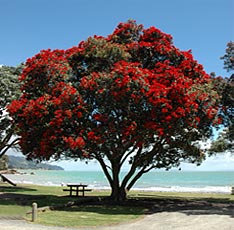
A Pohutukawa Tree
It was the season of the pohutukawas. The huge native trees that lined Tamaki Drive along the harbour burst with the streaming, crimson flowers. Have you seen the gulmohurs on a summer afternoon in Delhi? The pohutukawas must be their native cousins. ‘Splashed by spray’ as their name alluded, these radiant blossoms that prefer the shoreline, danced and swung and blushed in the balmy afternoon. I ran to gather the few that lay strewn in dazzling disarray on the street.
Standing at the Waitamata harbour, my gaze was drawn to Rangitoto. Forming the harbour entrance this dormant-island volcano dominated the view from the waterfront. There is something mystical and spiritual about these volcanic mountains. Auckland abounds in them. Still and silent, they reflected the quietness and yet the fierceness of the indigenous Maori.
These conical mountains studded the landscape of the city with as much profusion as the lush parks, the native trees, the oaks, the elms, the willows and the sparkling waters that surrounded it.
Beyond Rangitoto, the sky dipped into the Pacific. The colour of this beautiful ocean left me mesmerised. It was not the turquoise of the Atlantic, or the azure of the Indian Ocean. But a clear cerulean, shining a brilliant sapphire on bright afternoons, a peacock-blue when it rushed to meet the twilight, and turning dark like the lapis lazuli, at nights. Waters that invited you to dip your feet in, to see if a little of their colour would rub onto your skin.
I stood there, the strange but now familiar feeling tugging at my heart again, and wondered if this was where my spirit had led me in a quest of its old home.
And as I pressed a fallen pohutukawa between the pages of the small book of New Zealand poetry that I had just bought, I knew that its colours would not be mine to see when I reached home. I walked the street, my brown hand ensconced in my friend’s white one, wrapped in the dazzle of colour and the warmth of friendship, and the beauty of that instant became an integral part of me. The pressed pohutukawa would surely fade, but not its iridescence, and not my memory of that sunlit moment.
From Waitamata, to Manukau harbour on the other side of Auckland, we walked. Was it our seeming unawareness of time, or had we reached the other side of Auckland within the blink of an eye? Throwing her head back laughing, my friend explained, ‘Auckland fills the narrow isthmus that separates the Waitamato and the Manakau harbours. At its narrowest it is just one kilometer. You can return to India and claim to have walked from across the Pacific Ocean to the Tasman in just ten minutes!’
We drove home as the sun went down and I watched the moon rise above the masts. A gull fell away in the vanishing twilight and the horizon dropped and vanished into the dark.
Night. The restaurant spun me across the black antipodean sky. On top of the Sky Tower, sipping my Chardonnay, the firmament looked like something I had never ever seen before. ‘Look at the iron pot, ’ pointed my friend and I followed her hand and eye across the star spangled sky. It took me a few minutes to recognize the familiar constellation. ‘Oh, you mean the Big Dipper?’ I asked, ‘but it is upside down, ’ I said. The night sky over the Southern Hemisphere was a new discovery.
I sipped the vintage New Zealand wine and listened to the musical description of its taste. Subtle, delicate, elegant, graceful, golden, tantalising, velvety, intriguing. ‘Excuse me, ’ I interrupted, ‘are we talking of a wine or a woman?’ I asked. My friend’s green eyes twinkled in the flicker of the candle lights as she softly whispered, ‘Is there a difference?’
Under my feet, spread Auckland. The city by night pumped with life. Thirty seconds down the long elevator, and we were soon in K-Road. Karangahape road truncated. Neon signs, flashing streetlights. Down the road, I was led into a bar that screamed Caluzzi in blinking lights. I was lost in the small crowded smoke-filled room, music in full blast, people dancing. I laughed. The spirit of the party was contagious.
Out of the smoke and din rose an off-key Hotel California. I turned to find a tall, lean figure. Red velvet, gold sequins, lips that squealed bright pink, gold stilettos, false eyelashes, dark curls, and badly waxed arms. She took me by the waist, fluttered her eyelashes, and swung me into a dance. I looked at her in wonder. She was vibrant, joyful, and affectionate. I am Courtney; she introduced herself in a deep baritone.
I am later introduced to the expression ‘drag queen’.
It was a ‘Come back again to New Zealand’ party. And as I stood in my friend’s hallway, in my silk sari and sparkling bindi I felt as though I belonged completely. Among the guests, were a cross-dresser, a transvestite, a drag queen, gay actors, fading stars, evangelists and lawyers. Warm, welcoming and generous, it was like I knew them all from eons before. The night swept on with music, dance and an easy camaraderie; and as I lazed in the deck under the liquid yellow moon, I felt my soul settle into an easy warmth.
Auckland, New Zealand. It held everything. Museums, zoos, aquariums, art galleries, theatres. Great shopping, amazing restaurants, beckoning sidewalk cafes. Queen Street invited you with its hustle and bustle, Parnell enticed you with its quaint Victorian charm and fine galleries, the hip Ponsonby lured you with its pubs and bars and clubs, and K-Road tempted you with its alternative life-styles. The indoor and the outdoors, Auckland offered it all.
Shobha Vishwanath
2010
http://www.indiatravelogue.com/trav/trav54.html
Average Rating: 4.6 out of 5 based on 245 user reviews.
